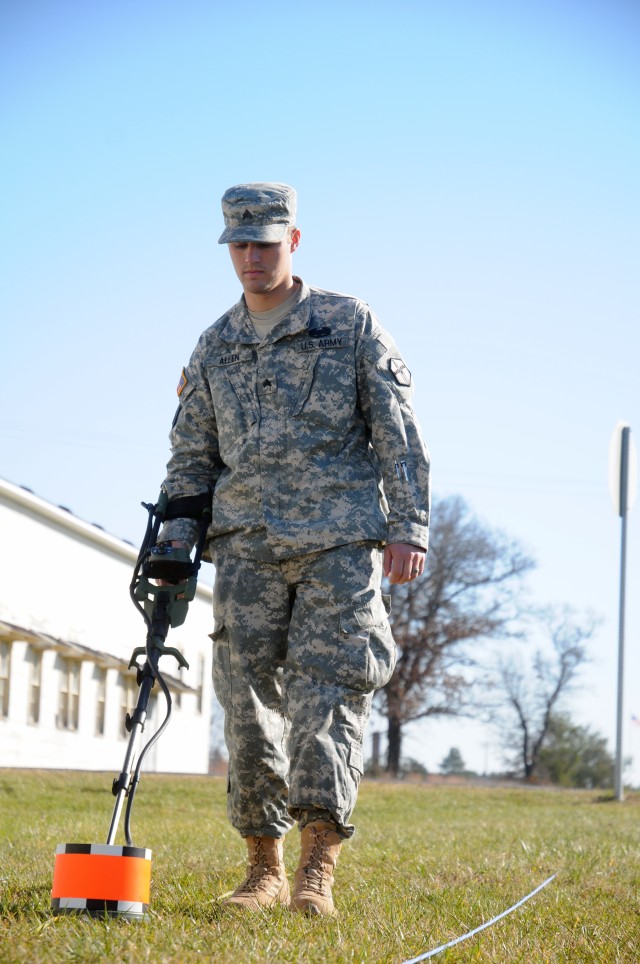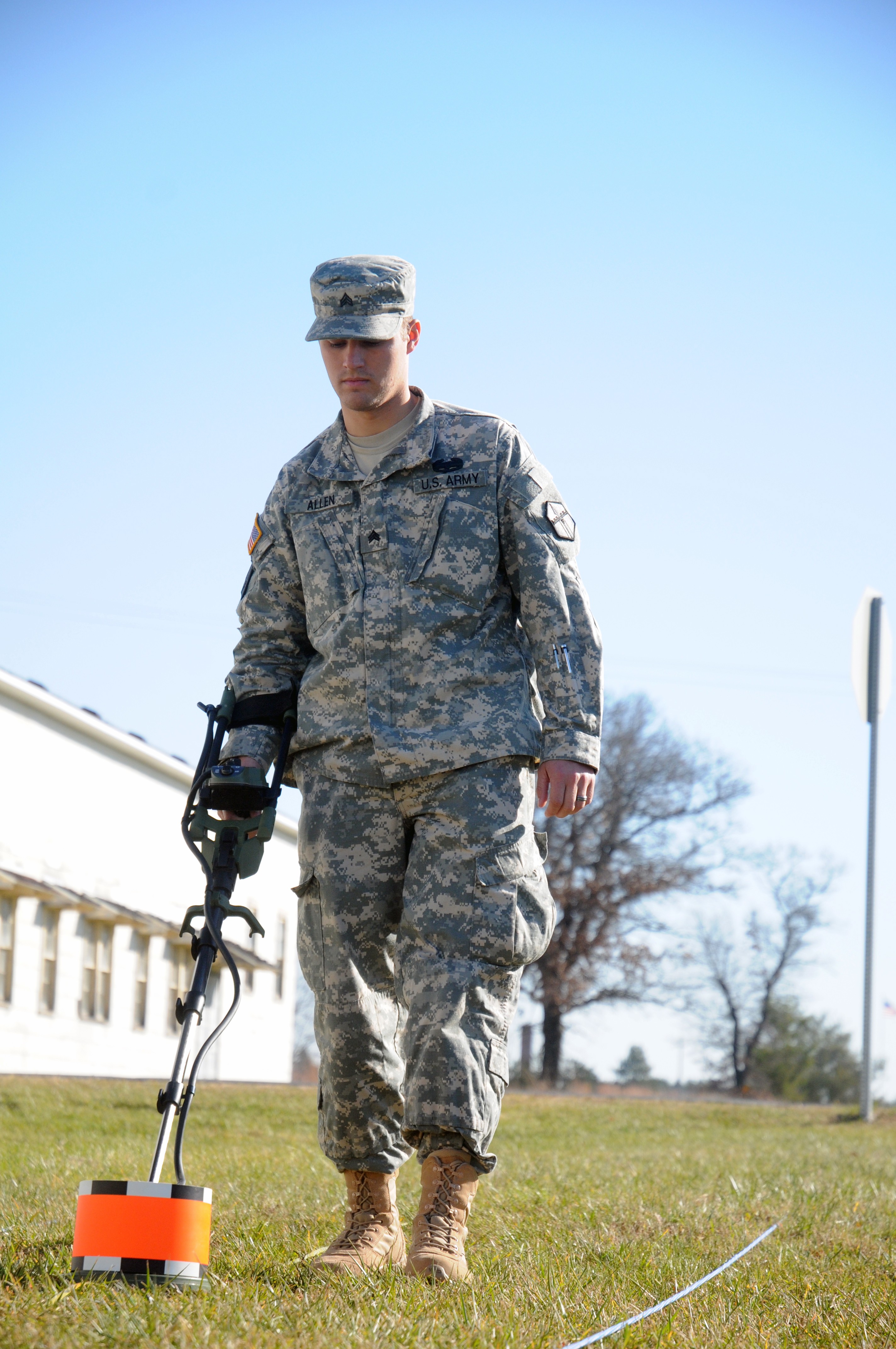FORT McCOY, Wis. -- Soldiers training to walk across the fields of Afghanistan today and tomorrow, are training in much the same way they trained to walk across the fields of Europe during World War II.
Soldiers from the 744th Engineer Company, an Army Reserve unit from Ogden, Utah, trained at Fort McCoy to deploy in support of Operation Enduring Freedom, using the AN/PSS-14, a much-updated version of World War II mine-detection equipment.
"Today's AN/PSS-14 mine detector is the Army's only true mine detector," Mark Blackburn said. Blackburn is an instructor-trainer with BRTRC Technology Company, St. Robert, Mo. Blackburn and his partner, Russell Frazier, were at McCoy for a week to instruct 744th Soldiers to be trainers on the AN/PSS-14 for the 744th.
"These Soldiers from the 744th are going to Afghanistan, a country where the Soviets planted hundreds of thousands of land mines in the Afghan struggles of the 1970s and '80s," Blackburn said. "Thousands of those mines are still buried and unexploded."
"Soldiers go through an operator's course, then some of the unit's sergeants (E-5) and above go through a unit master trainer (UMT) course so they will teach the operator course to their unit's Soldiers," Blackburn said.
UMT course Soldiers get additional instruction on the AN/PSS-14, how to operate the Sweep Monitoring System (SWS), how to install training lanes, develop tactical scenarios in training, and how to establish and administer a unit-level training program.
Part of the UMT course was the use of the SWS to measure the Soldier's ability to properly sweep a mine lane.
"The AN/PSS-14 is used to detect and mark a potential suspect target," Blackburn said. "Then the Soldier backs out of the area, detonates the object in place, or calls explosive ordnance disposal personnel. Today we are just training them to properly and safely sweep a threat area, and then re-enforcing those techniques."
Blackburn also explained the AN/PSS-14 Mine Detection System is employed in both predicable and unpredictable scenarios.
It is used to widen existing lanes through a minefield, create new ones or clear an entire mine obstacle. It will assist in reconnaissance missions en route, clearing bivouac sites or supporting contingency operations.
The AN/PSS-14 detector came into Army service in 2003 and also is used by the Marines.
"The AN/PSS-14 is a vast improvement over today's metallic handheld mine detectors in that it employs an advanced state-of-the-art metallic detector in addition to ground-penetrating radar (GPR)," Blackburn said.
If a mine is detected, an audio cue alerts the operator. The result is a greatly improved system that will protect Soldiers and enhance their ability to detect landmines.
Blackburn said the AN/PSS-14 is much more capable equipment than the previous mine-detection systems, so Soldiers require more training and practice. Unit-level sustainment training and operator licensing will be critical to ensure the Soldiers' safety, he said.


Social Sharing